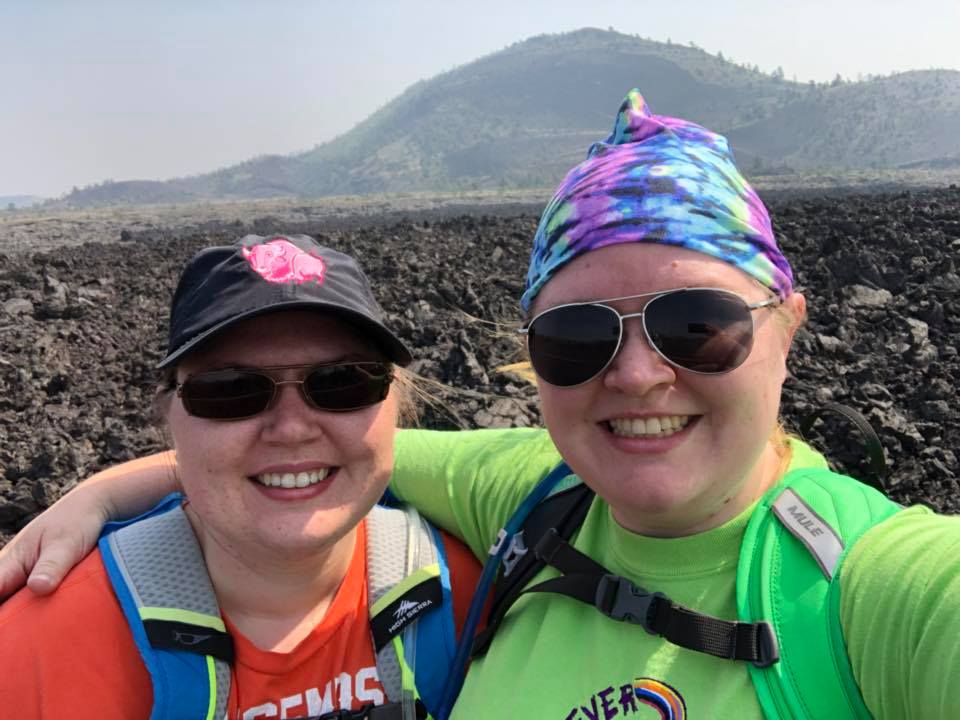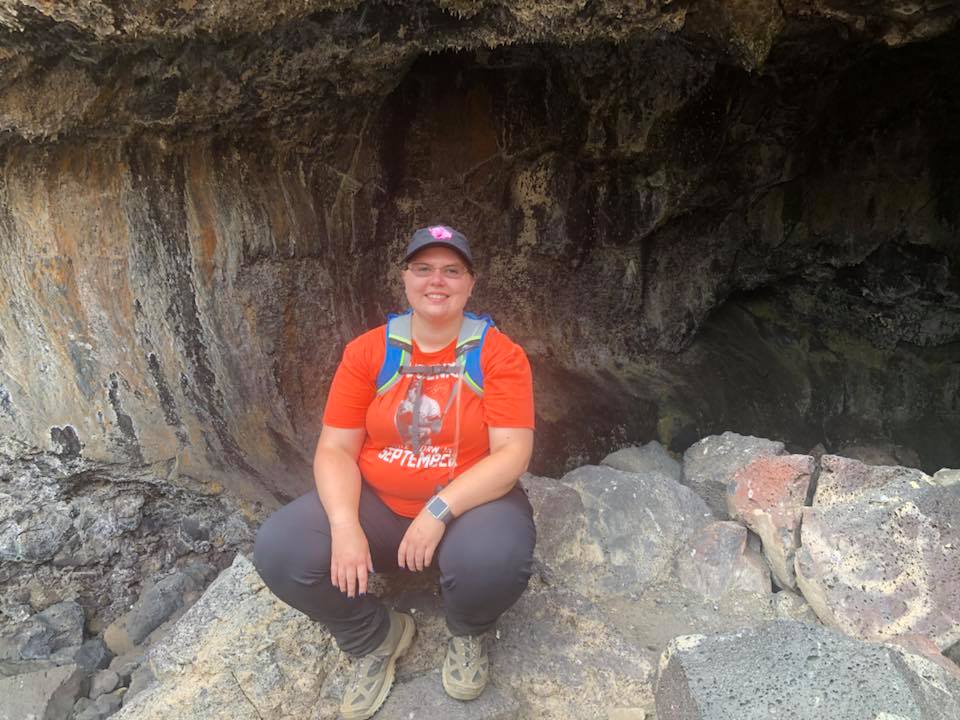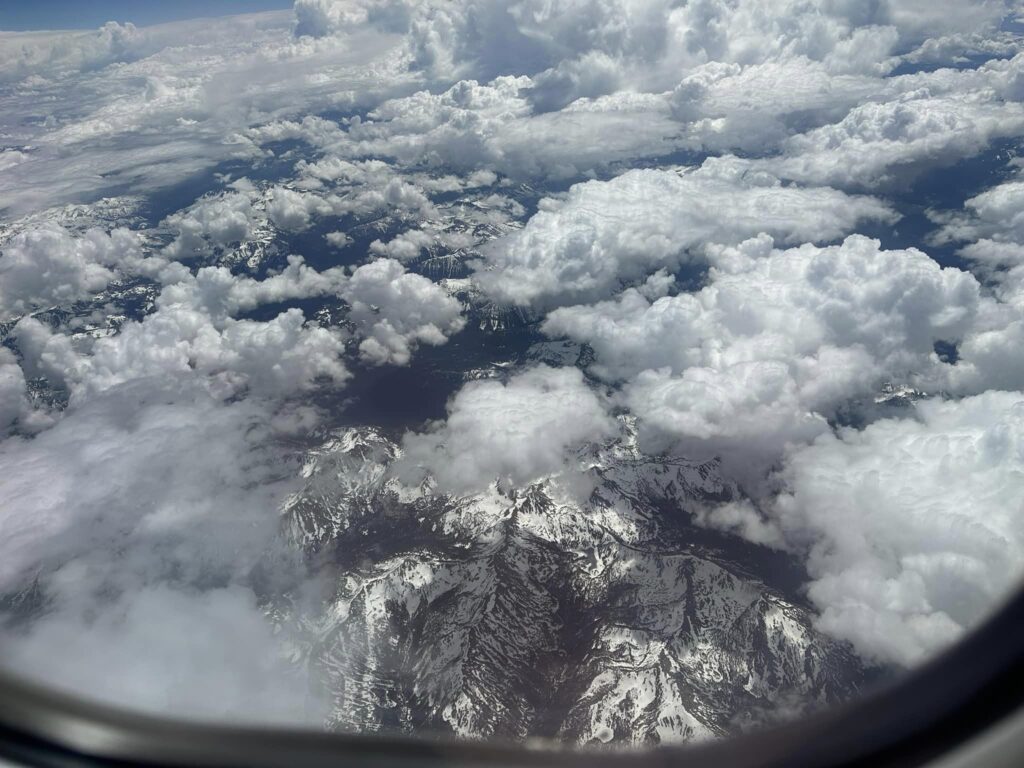Day hiking is one of my favorite ways to get out and see nature. What is a day hike? This can be any amount of hiking that is done in a day, whether it is two miles or twenty-plus miles. The amount of time isn’t the most important thing, but packing the essentials for a successful hike is very important; trust me, I have made many mistakes.
One mistake went something like this: “Hey, sis, let’s hike South Sister today. We would have to travel pretty far; let’s do it this weekend.”
Her, “Sure, that sounds great, let’s go!”
After driving for over an hour, I asked, “Um, you grabbed the hiking boots by the front door, right?”
Her: “Um, no, I thought you did. Crap, ok, we’re going back to get them.” This is a hike that can only be done with proper shoes.
Essential items to consider when deciding on things to take on a hike are the weather conditions, how long you will be hiking, and the trail conditions. Depending on those factors, more food, water, layers of clothing, and gear may be needed.
Later, as we were miles into this trail, we also discovered that the only food we had in our packs was protein cookies! We did have a fun hiking trip, but given the late start that day due to the first mishap and not having a lot of snacks, we decided to call it quits before we reached the summit and the view we were intentionally going for. No matter how long the hike is, leaving without your ten essentials is never advised!
This blog post contains affiliate links which may reward me monetarily or otherwise when you use them to complete a qualifying purchase. For more information, please see the Earnings Disclaimer. As an Amazon Associate, I earn from qualifying purchases.
Table of Contents
ToggleWhat to Bring Day Hiking
Items that should always be on your day hiking checklist include:
- A hiking backpack
- Non-perishable food
- Water
- Sturdy hiking shoes
- First aid kit
- Knife or multi-tool
- WAG bags
- Optional, but highly recommend Trekking poles
- Ten essentials
Hiking Gear
How do you choose a day pack? This depends on how much gear you will carry, how far you want to hike, and the activities you want to use it for.
Most hiking packs are compatible with hydration bladders or have pockets for water bottles. Another essential thing to consider is how large your torso is; it is vital to have a well-fitted backpack for comfort. When I was first starting, I went to a sporting goods store such as REI, where they helped fit me with a backpack for my size; I recommend the same to others. On my first trip, I used a borrowed pack and was miserable.
Daypack Capacity
Choosing a size that will work for you is essential. Packs come in sizes of 10 liters up to 50 plus liters. When thinking about what size will be best for you, consider what you will need to feel comfortable on the trail with, as well as your ten essentials. Some people are comfortable with very little, whereas others carry a lot of extra things and weight to be more at ease on the trail; at the end of the day, your preference is most important.
10 Liters or less packs
This pack is pretty small and is best for super short hikes, and will hold keys, a wallet, a small jacket, and maybe some fuel.
11-20 liter packs
These packs are a bit bigger with the capacity to hold gear, food, and an extra layer for a day hike.
21-35 liter packs
While a little bit larger, it offers space for everything one needs on a day hike, with extra room for a camera or other items that one may want. I like this size for most hikes.
35-50 liter packs
A pack of this size would be ideal for hikes that require extra gear, lots of layers or perhaps carrying gear for someone else (not recommended in case you get split up).
I have used a simple Camelpack , and it’s worked great for shorter day hikes. It has room for water, food, and pockets for the essentials, but not much else.
Hiking Shoes
Ensuring that you have solid shoes that fit your feet is super important for comfort and safety while hiking. Some people prefer trail running shoes over hiking boots. Everyone’s feet are different, and if you are unsure what will work for you, I highly recommend going to a sporting goods store and trying on several pairs; maybe also try getting fitted at a running store.
Trekking Poles
Poles are not required but have many practical purposes while on the trail. I love using poles to help with stabilization, navigating over rough or steep terrain, and navigating in water to test its depth. They can help reduce fatigue in the knees and legs.
Navigation
As one of the 10 hiking essentials, don’t leave home without a navigation source; phone service is often unreliable on trials. Knowing how to use a map and compass is very important, as well as having a plan and letting others know that plan.
Items that are helpful for navigation:
- Map and compass
- Smartphone apps such as Gaia and Alltrails (be sure to download the map before heading out)
- Garmin inReach
First Aid
A first aid kit is a must, but also know how to use the items inside it. Accidents can happen anywhere, and you will be happy to have a kit when needed. Be sure that your first aid kit includes:
- Tylenol or Ibuprofen
- A tourniquet
- Band-Aids
- Gauze
- A splint or ace wrap
- A cold pack (this can save your life in the heat)
- Moleskin for blisters
- Scissors
- antiseptic wipes
Safety for Hiking
To ensure safety while on a hike, be sure to plan out what route you plan to take in advance; let someone know where you’re going and when you will be back. Leave a note in your vehicle with the above information and the person you have told; my sister always has my itinerary when I’m on trips or out for a day hike.
Be sure to carry a headlamp or flashlight with extra batteries. I recommend taking the batteries out when not in use and, at minimum, checking the light out before hitting the trail; I learned this the hard way when my flashlight wouldn’t turn on when I needed it. Don’t rely on your phone flashlight. They aren’t that bright, and chances are your phone battery is low due to being on a trail and searching for service.
Carry a whistle if you get stuck on the trail and can’t walk. You can alert people nearby that you are in trouble and need help. They are very easy to attach to the front strap of your pack for quick access.
Depending on where you are hiking bear spray might be indicated. Always know ahead of time and know how to use it; the time to learn isn’t when you need it.
Hydration and how much water to bring on a hike
It is very easy to get dehydrated when out on a hike. People have died half a mile from their cars because of heat and dehydration. It is recommended that each person carry at least one gallon of water or one liter per hour. Be sure to carry a way to filter water if you get stuck out on the trail and need to access water from a stream or pond; I use Lifestaw. Electrolytes can help with hydration and cramping. A couple of options to try are Nuun or Tailwind.
Food and what to pack
Hiking burns many calories, and you will want to have lots of snacks. My favorite things to pack are jerky, nuts, and granola bars. Avoid things with chocolate that will melt and make a mess in your pack or on you. On a longer hike or full-day hike, be sure to pack a non-perishable lunch. Some people like peanut butter and jelly sandwiches, but I can’t stand peanut butter, so when not packing a camp stove I like packets of tuna and fruit.
Clothing
Everyone’s preferences vary quite a bit on what to wear, but general advice is to go for moisture-wicking, quick-drying clothes and pack extras. You never know when something will happen, and you may have to spend the night on the trail. Consider the terrain you will be in, altitude, and weather. Sometimes, the weather can vary drastically in a day, depending on the location and duration of your hike. It is generally advised to avoid cotton.
- Rain jacket
- Wool shirt and beanie
- Moisture-wicking shirt
- Moisture-wicking underwear (I wear the same ones for long runs)
- Good socks
Sun and Cold protection
Heat
Hat
- Sunglasses
- Chapstick with SPF
- Neck protection
- sunscreen
Cold
- Wool beanie
- Layers
- Raincoat
- Mittens/gloves
- Jacket
Emergency Items
If something goes wrong, you will want a way to make a shelter and stay warm. I carry waterproof matches in my pack. Fire starters have many options, but the important part is knowing how to use them. I carry a Don’t Die in the Woods emergency sleeping bag. Another option is space blankets, but they do degrade, so check them often and ensure they are intact
Tools
Carry a knife or multitool in your pack. I also recommend a gear repair kit, including duct tape to repair holes in your pack or shoes and zip ties to hold things together.
Other items recommended to make your hike great
- Baby wipes
- Body glide (to prevent chafing)
- Camera/tripod
- Outdoor journal
- Bug repellant
Leave no trace
Our parks are magnificent, and it is up to all of us to keep them that way. Remember to follow the principle of leaving no trace when hiking. It can be a pain to pack everything out including waste that we take in, but it is worth it to protect the spaces we hike in.









